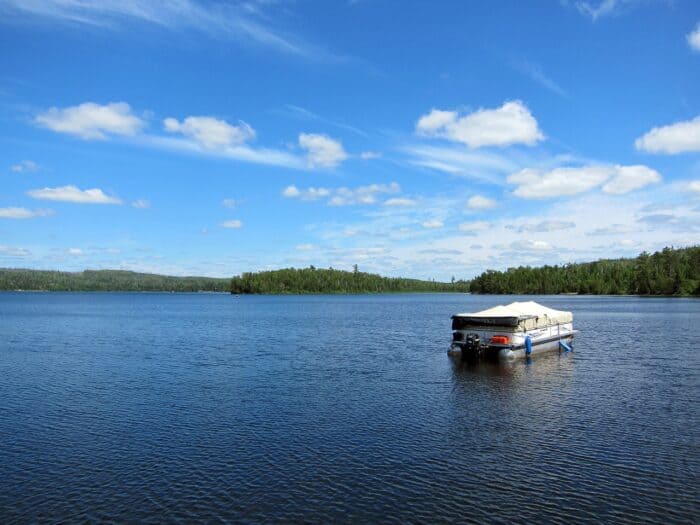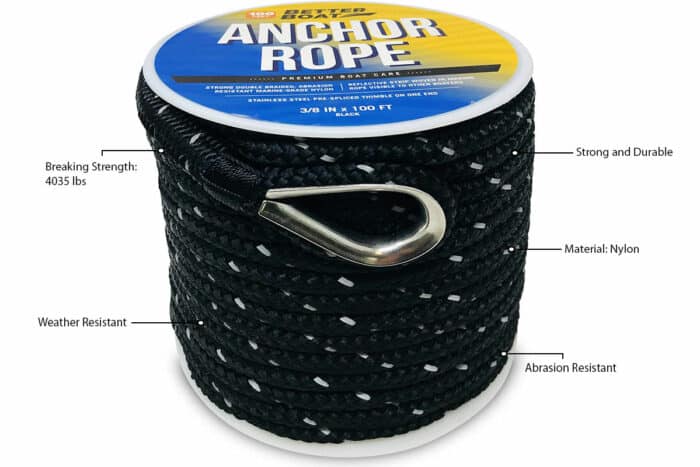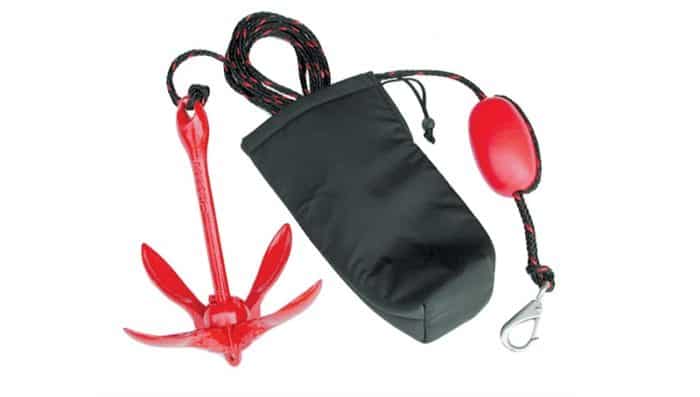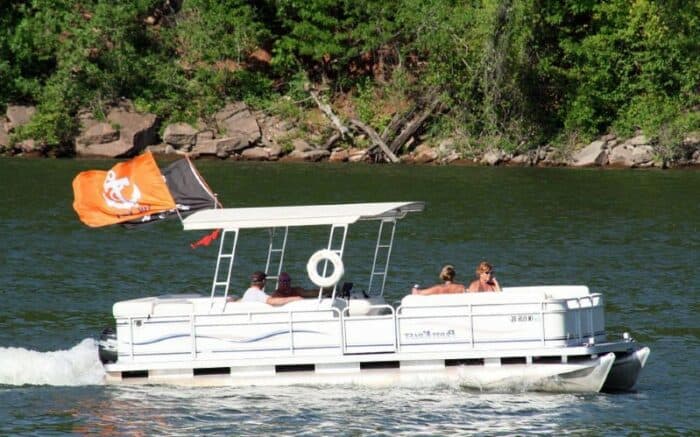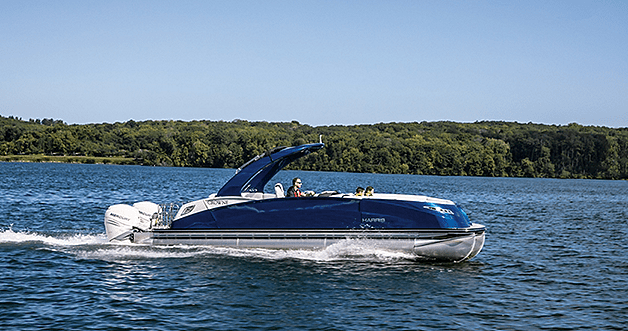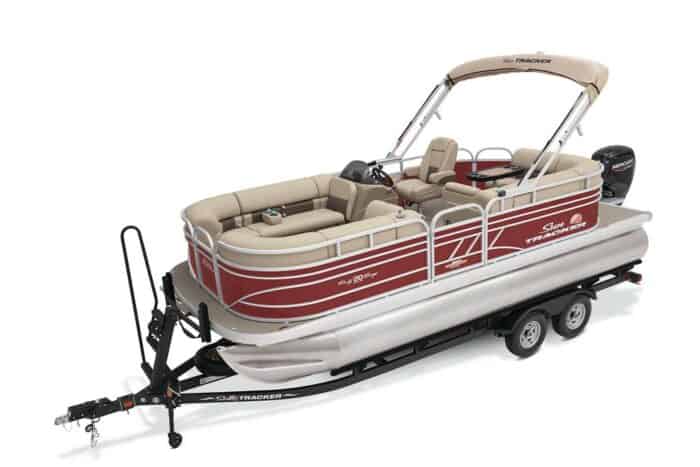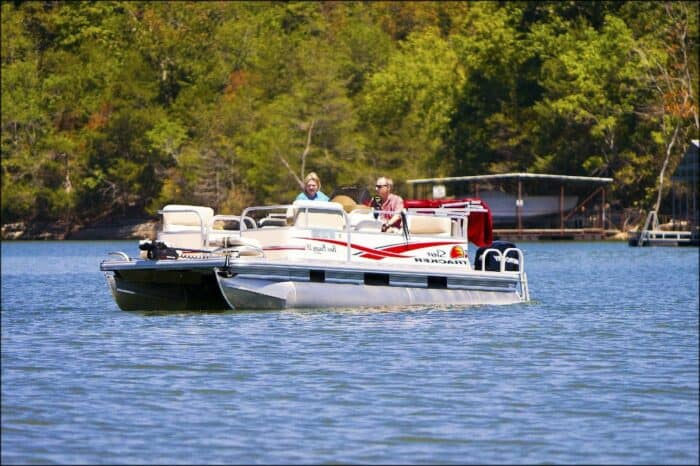How to Anchor a Pontoon Boat
Anchoring a pontoon boat is slightly different than anchoring other kinds of boats and it may throw you off. Proper anchoring of a pontoon boat requires positioning your pontoon correctly and also having a good understanding of the depth of the water you’re in. Because pontoons are so much more buoyant than most other kinds of boats they tend to bob and move a lot more on the surface when you’re anchored than other boats do. For this reason you want to make sure you have the right anchor and have set it properly. There are several steps you’ll want to take to make sure you’re doing it right so let’s explore those in detail.
Steps to Anchor a Pontoon Boat Properly
Before you worry about pontoon anchoring, make sure you have the right anchor. This may sound silly but you’d be surprised if you’re new to boating that different anchors work in different circumstances. Not every anchor is the right kind and it chiefly depends on what’s below you. Some anchors are ideal for soft, muddy surfaces while others are best for rocky bottoms. Because your pontoon boat is probably being used in inland lakes, ponds and rivers, you won’t be needing something like what you might want on the open sea.
Remember, the size of your boat isn’t the most important factor when it comes to choosing an anchor. You’re looking for holding power, and the circumstances of where you’re anchoring your boat affect that the most. Wind and the length of your boat both factor into choosing an anchor. That said, pontoons are not typically used in windy conditions and, honestly, if the wind kicks up over 20 mph I would strongly reconsider keeping my pontoon anchored in those conditions. You’ll be better off heading back to land. This is part of the reason anchoring a pontoon is a little trickier than anchoring a regular boat, because the dynamics are not the same.
Consider a Pole Anchor
While we cover a lot of anchor types that can work for a pontoon boat in the article we linked, one kind that can actually be really helpful for pontoon boats is a pole anchor. This can be either a power pole anchor, which you can have professional installed so it drops with the press of a button on a hydraulic system, or a much cheaper model.
Pole anchors are used on a lot of fishing boats and pontoons are ideal for these, especially if you fish in shallow waters. The nature of a pontoon and its shallow draft makes it perfect for this. If you’re unfamiliar, a pole anchor can be as simple of a sturdy fiberglass rod that you thread through a mount on your pontoon that you force down into the bottom of the lake or pond to hold you in place. Check out this quick video that gives you the basic idea of how one of these anchors works and see why they’d ideal for pontoons.
The speed with which you can set and remove one of these anchors makes them ideal for quick stops in your pontoon when you want to fish or just relax. Again, these are meant for shallow water and certainly not a lot of rough chop, but in the right circumstances they have a lot of advantages over traditional anchor types.
Choose Your Spot
You’ll need to get into a position where you want to anchor. This is where you’ll be determining the kind of bottom under the water your anchor will be sinking into, and also the water depth. Make sure you pick a place free from any nearby obstructions. On the open sea this is rarely an issue. But in a lake or a river, you need to be aware of where rocks, logs or other obstructions and hidden dangers may be waiting. You don’t want to answer close enough to something that you can drift into or get your anchor rode tangled in.
Once you have a spot, maneuver your boat so your bow is facing into the current or the wind, if there is any, otherwise just settle in however you like. Pontoons are far more susceptible to wind than other boats so you need to be aware of that.
Properly Anchor Your Pontoon
Once you have the right anchor and position for where you’re boating, you’ll need to have the right rode length as well which should be 5 to 7 times the depth of the water you’re in. A mix of chain and nylon is usually preferred for the rode.
A depth finder is honestly the easiest way to determine how much rode you’re going to need before you drop anchor so if you have one, make use of it. You don’t want to release too short a line because your anchor will not be able to grip the bottom. On the other hand, if you toss out too much, then you’ll end up drifting way too much. That’s why knowing the depth is key.
If you have a boat that’s between 20 and 25 feet you’ll need an anchor that can provide a holding power of up to 2,500 lbs or so. For 25 to 30 feet it goes up to 5,000 lbs. For 30 to 35 we’re looking at 10,000. And up to 40 feet it’s 15,000 lbs. The anchor doesn’t have to be super heavy to provide this holding strength. Check with an individual anchor to know for sure what kind of holding strength you’re getting.
Turn off your engine when you’re ready or put it to idle to drop anchor and secure your rode. I’d keep it in idle just in case things go awry and you need to reposition to try again. Secure your rode to the cleat if necessary, but this depends on how your boat is set up, of course. If you have a winch or underdeck anchor, then that’s all ready for you to use. Just make sure it’s secure because the last thing you want to do is lose your anchor.
Make Sure You Lower Your Anchor Slowly
For some reason new boaters will occasionally have the strange idea to either hurl the anchor overboard into the water or just toss it haphazardly over the side. Please don’t do that. You risk getting it tangled that way and causing yourself too many problems.
Lower it slowly off the bow of the boat. This is why you put the bow towards the wind or current. As you lower your anchor, the current or wind, if there is any, should push you ever so slightly away from the anchor as it drops. This will help it get a grip on the bottom when it hits, ensuring you’re well and truly anchored if all goes to plan. If the wind and current is still, then your chain will hit the anchor and help push it down to keep it in place.
Secure the Anchor
This step can be the hardest part, especially if you’re new to trying to anchor a pontoon boat. Once the anchor has reached the bottom you’re going to need to wait for a little while to see if it’s properly set. Drift with the current for a couple of minutes. This can help your anchor take hold. Then you need to test that it’s actually set. You can tug on the line by hand to feel if there’s tension and resistance, but you need to do a more thorough test before you know for sure that your anchor is where it needs to be.
If your boat doesn’t seem to be moving much any longer, put your engine in reverse and then very gently give it some throttle to increase tension on your rode and really set the anchor in place. If the boat keeps moving along and the tension in the line weakens a bit, your anchor didn’t set and you can pull it up and try again. But if it does hold the boat then you can turn the engine off and you’re good to go.
Be slow and careful when doing this. You don’t want to give it too much power, that’s not the point of the test. Just a little burst to get the boat moving to see how the anchor holds you in place. If you give it too much power you could pull the anchor free or even damage your boat.
Pick a Landmark
It can be hard to know for sure if you’re secure and anchored in place sometimes, especially if the wind or current are not very strong. A good method to keep track of this is by picking a static landmark on shore. If there’s a building or a certain tree you can see from a specific point on the deck of your boat, choose that. As time passes, take a look at your landmark and see if you seem to be in the same place relative to its position. You can use something on your boat like a seat back or the leg for a bimini top as a marker to. If you find you’re drifting too far from it then your anchor may have come loose.
Keep in mind, you do have some slack on the line and there’s going to be some natural drift. If you’re off a tiny bit from your landmark, that’s fine. But if you find yourself way off, then you may need to reset your anchor.
Pulling the Anchor Up
If you need to reset your anchor or you’re just done for the day, it’s time to pull the anchor up. The best way to get your anchor up is a straight vertical pull. You want to be as close to where the anchor is set as possible and pull it up and out of the water. This is very important because if you try to pull it in at an odd angle, aside from making more work for yourself, it’s also more likely to damage your boat. You don’t want flukes or tines or any other part of a heavy, metal anchor scraping against your pontoons and potentially scratching or cutting into them.
Make sure you clean the anchor off before bringing it aboard if it’s all muddy. That keeps your boat clean and also prevents any unwanted visitors from the mud from climbing aboard.
Tips to Help Anchor a Pontoon Boat
A winch is a great tool to have not just for dropping but retrieving your anchor as it does a lot to help keep the rode straight and secure as you reel it in. It also keeps the dirty anchor from actually getting on board the boat so that’s one less thing to worry about. If you have the room and the interest, look into getting one to make anchoring your boat a little easier.
Another possibility is a pontoon anchor ledge. This is a super simple addition to your boat which is, if we’re being honest, just a plain, flat shelf attached to the side of the boat. Attach the winch and anchor and you lose no deck space at all but have the anchor ready at hand whenever you need it.
Make sure you have some extra line on hand, just in case. You don’t need a ton and you never want to run too much out at one time, but always have some spare handy just in case. Likewise, consider having a spare anchor on hand as well if you have the storage. Either a heavier anchor or one suited for a different kind of bottom. So one good for rock and one good for sand, just in case.
If you’re not sure about anchor sizes, it’s never a bad idea to check with an expert. Ask at your marine or marine supply store. In general, however, you can expect that a boat that’s maybe 14 to 16 feet will be using an anchor that weighs around 20 to 30 lbs.
An anchor storage bag is also a good idea to keep your anchor safe and clean when it’s not needed.
The Bottom Line
The most important thing to remember about anchoring pontoon boats is to know your depth and to know what kind of ground you’ll be dropping your anchor into under the water. Choose the right anchor and the right length of line and you should be able to set your anchor without a lot of difficulty. Remember to drop your anchor slowly and test it to ensure it’s set. Draw it up as vertically as you can to minimize the risk of any damage.
Categories: Pontoon Boats

